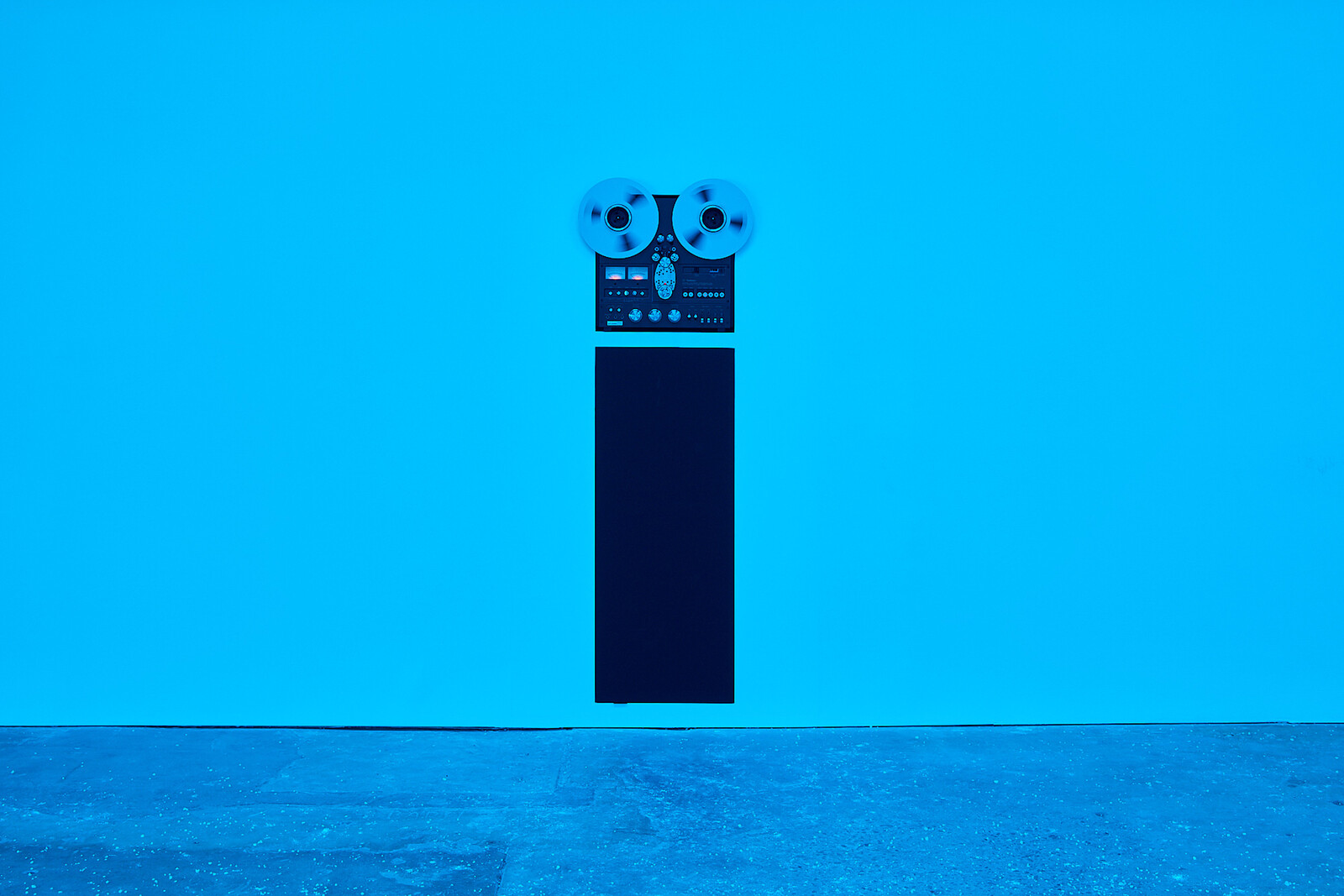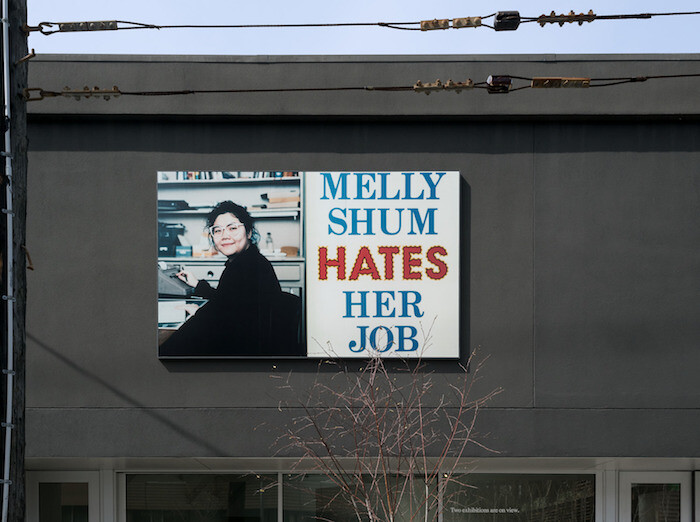Categories
Subjects
Authors
Artists
Venues
Locations
Calendar
Filter
Done
March 27, 2020 – Review
Lydia Ourahmane’s “صرخة شمسية Solar Cry”
Fanny Singer

The second time I visited Lydia Ourahmane’s exhibition I was alone save for the young student-docent sitting at the front desk wearing earphones. Standing in the cavernous, quasi-industrial space—most of the internal walls had been removed—it felt appropriate that the last show I expected to see in a long time should be a near-empty room flooded with blue-tinged light (the front windows and skylights are laminated in sheer cobalt film) in which two tape decks mounted on opposite walls play recordings of an opera singer holding one note, and then another. The exhibition took on an elegiac air; the sung notes—a spare, tonal fabric—assumed the weight of lamentation.
This cyanic atmosphere reminded me of visiting Dominique Gonzalez-Foerster’s retrospective at Paris’s Centre Pompidou, a few days after the citywide attacks of November 2015, through which played a soundtrack of rain. I read the recorded deluge as an aural landscape of mourning, a kind of liquid dirge. That the current climate of fear has been triggered by something invisible to the naked eye—a viral “parasite” so minute that 50,000,000 could fit on the head of a pin—feels germane in the context of an exhibition made by an artist who prizes the ineffable, …
May 9, 2018 – Review
Ken Lum’s “What’s old is old for a dog”
Monica Westin

Ken Lum is a prolific writer as well as a conceptual artist, deeply attuned to semiotics across media, whose past work includes a series of “language paintings” that depict nonsensical words in colorful designs. He would probably be amused to hear that I turned to the Oxford English Dictionary while trying to reconcile the seemingly divergent bodies of work currently on display at the Wattis Institute.
The exhibition “What’s old is old for a dog” (as far as I can tell, an invented idiom very much in keeping with Lum’s other fictional deployments of signifiers) is divided in two by a temporary wall in the middle of the main gallery. Each space contains formally and thematically distinct sets of works separated by over a decade. The first comprises Lum’s earlier and more familiar pieces, which experiment with how individuals convey or project identity through language conditioned by class. These include his 2001 “Shopkeeper Series,” simulacra of small business signs spelling out messages of quiet desperation in short word limits (like “SUE, I AM SORRY/ PLEASE COME BACK” beneath a sign for “Jim & Susan’s Motel”); several photographic portraits of real and fictional characters from the “Historical, Youth and Attribute Portraits” series …